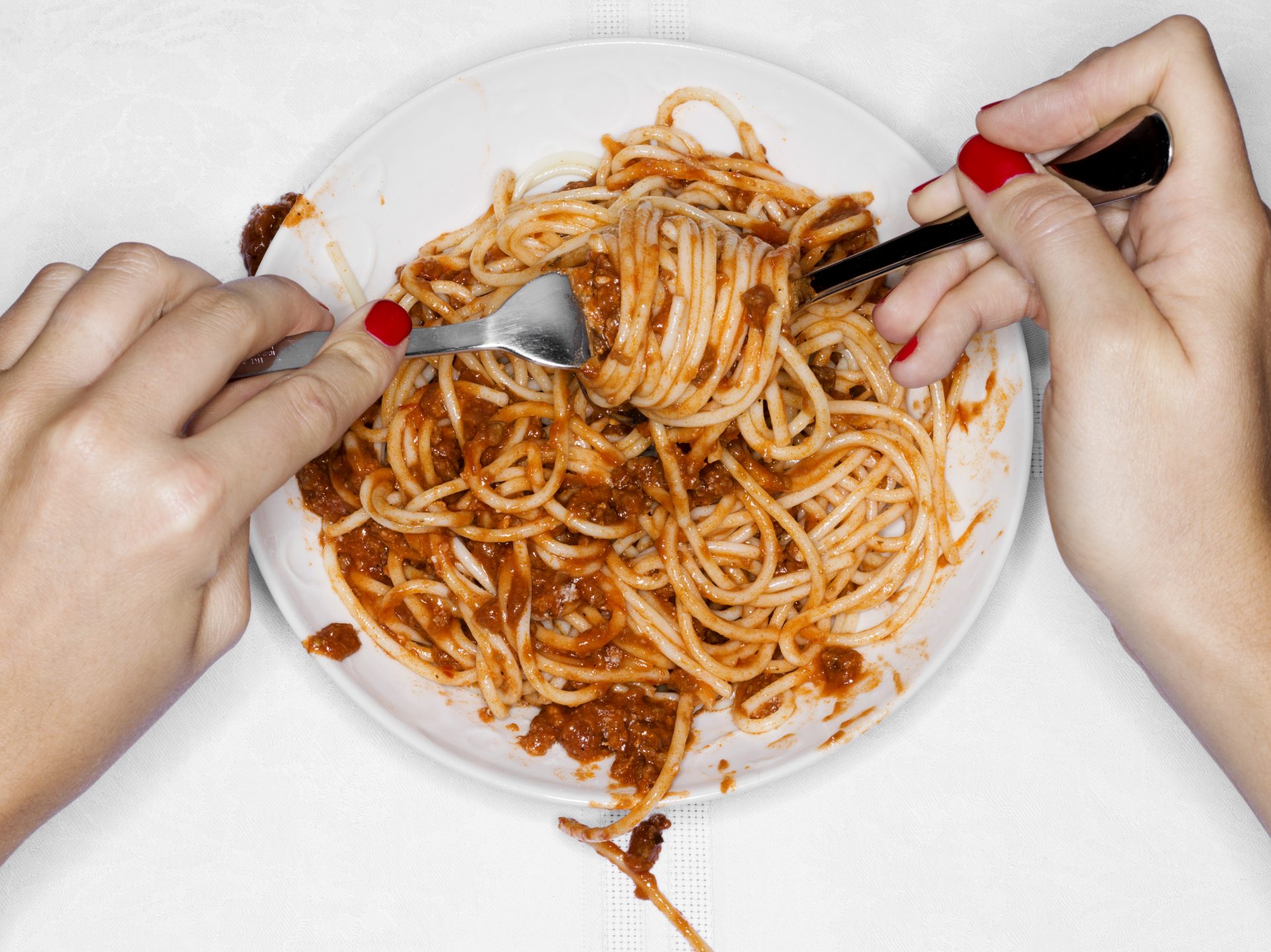Do you really need more food during your period? An expert explains why listening to your cravings matters.
PMS is associated with mood swings and stomach cramps, but the most stereotypical image of a hormonal woman involves eating. Whether it’s bars of chocolate or tubs of ice cream, the belief that our cravings soar around our periods is long-held.
While that’s a reductive image, many of us do notice that our appetite changes around our menstrual cycle, whether it’s being insatiable just before our bleed or feeling too nauseous to eat while we’re on. But do our appetites and energy requirements really change from week to week?
You may also like
Do hormonal changes impact your mood? Dr Hazel Wallace investigates whether PMS really makes you emotional
“Our hunger and appetite are controlled by complex regulatory pathways which are neurochemical, hormonal, physiological and psychological,” says Dr Ghazala Aziz-Scott, specialist in integrative women’s health and bioidentical hormone balancing for the Marion Gluck Clinic. Given the fact that we have changes to all of these aspects of health throughout our cycles, it makes sense that our desire for food is affected across the month.
Aziz-Scott says that our menstrual cycle has two main phases, the luteal phase and follicular phase, and that our hunger can be different between these two stages.
Hunger and appetite during the follicular phase
During the first half of the menstrual cycle, beginning on day one of your period and lasting until ovulation, our oestrogen levels are at their highest. “Higher oestrogen levels stimulate serotonin, our feel-good neurotransmitter, and decrease insulin sensitivity. It also impacts hormones that cause satiety, such as GLP1. That means our appetite tends to be lighter, we are less likely to have cravings and our bodies use carbohydrates effectively for fuel,” says Dr Aziz-Scott.

While that is the case for the majority of the two-ish week-long follicular phase, the first few days of our bleeds tend to be more individual. “Menstruation is a time when appetite varies with each woman from a dull appetite with nausea to intense cravings,” says Dr Aziz-Scott.
Hunger and appetite during the luteal phase
The luteal phase begins with ovulation and ends as your period begins and is characterised by an increase in progesterone. “Higher levels of this hormone causes appetite to rise,” says Dr Aziz-Scott, and the main reason for our desire to eat more food is because the body is burning more energy. “Progesterone is a calming hormone but also has a hyperthermic effect to raise body temperature, which means the body is using more energy,” she explains.
Research shows that daily caloric needs raise by 100-300 calories a day during the late luteal phase, showing that your PMS appetite isn’t in your head – it’s the body genuinely needing more fuel. Honouring that hunger is important to support your energy levels during a tiring week.
You may also like
What to eat on your period: 3 iron-rich recipes for breakfast, lunch and dinner
What menstrual cycle cravings mean
Cravings get a bad rap. It’s true that sometimes your tastebuds just fancy eating whatever delicious meal they remember, but often it’s your body telling you what you’re lacking.
“In the follicular phase, we may crave more carbohydrates as oestrogen uses it for fuel. When progesterone peaks in the luteal phase, it promotes protein catabolism so we need good protein sources – take note of your cravings for meaty foods or legumes. Our serotonin also drops during this phase, and we might crave foods with tryptophan (a building block of the neurotransmitter).
“Post-menstruation, we often fancy iron-rich foods as we try to replenish what is lost in menstruation. In general, our bodies are intuitive and will give us messages about what it needs,” says Dr Aziz-Scott.
That doesn’t mean just relying on its signals. Knowing our nutritional needs change means we can eat accordingly, particularly during the pre-period week when our calorie demands increase and energy tends to be lower.
You may also like
Gut health and food cravings: here’s why you shouldn’t ignore those chocolate cravings
Dr Aziz-Scott recommends the following foods for PMS
Zinc to support hormone synthesis – from red meat, poultry, whole grains and legumes.
Proteins, containing amino acids to support tissue growth and repair, including white meat, eggs, beans, tofu and nuts.
B vitamins support the metabolism and hormone regulation- B6 is shown to support mental health during PMS and is found in red meat, seeds, legumes and whole grains.
Iron, which will be lost in menstruation, should be eaten in the form of beans, legumes and red meat.
Magnesium is shown to ease cramps and regulate the nervous system during bouts of PMS, so eating whole grains, beans and green vegetables is important.
Images: Getty
Source: Read Full Article